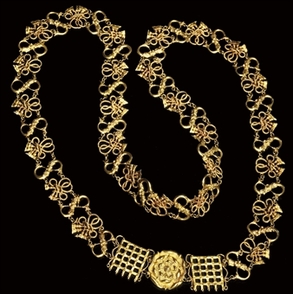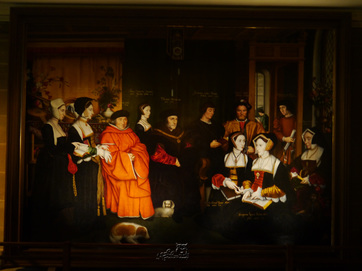" a 20½oz gold judicial chain of office made up of 27 S-links interspersed with 26 knot-links, with an unenamelled Tudor rose flanked by portcullises at its centre"
The Coleridge family, who owned the collar until 2006 stated that they thought that King Henry VII had given the collar to the first Chief Justice of the Common Pleas during his reign between 1485 and 1509 and that Henry VIII gifted Montagu the chain when he took up his role as Lord Chief Justice.
Henry is thought to have given at least twenty such collars to loyal subject for 'special deeds.'
Lord Coleridge, fifth Baron of Ottery St Mary, whose family have owned the collar since it was given to John, Duke Coleridge, who served as the first Lord Chief Justice of England from 1880 until 1894 was being sold to help with family finances.
In 2006 Sotheby's auction house informed Lord Coleridge that the chain was a 17th century copy and on that basis it was put up for sale, eventually reaching the final selling price of £35,000. Two year later Lord Coleridge discovered that his family heirloom had been identified as the Tudor original and resold at Christie's for £300,000 and described as a
"fascinating piece of history, both as a work of art and also as a rare Tudor relic".
Lord Coleridge lost his case, it was judged that the Sotheby’s expert made a
'“reasonable” decision when she said an aristocrat’s gold chain was worth £35,000 three years before it sold for £260,000"'
That is one hell of a difference!
What I find worrying about this is that two experts can look at the exact same object and come to two different conclusions.
That is fine if you are looking at something from a purely historical point of view, but it is certainly not alright when it comes to authenticating a piece or when the item is someone's property that is up for auction.
Apart from the families financial loss, it calls into question the historical expertise of valuers, surely in this case someone
got it wrong?
These collars have their origins in the insignia of a medieval house and were used as a mark of fealty, the Yorkist collar for instance used suns and roses, the lion of March and Richard III's white boar as a pendant. The Collar of Esses, brought into use by Henry VIII, has a portcullis or a Tudor Rose hanging from it, a fine example of this judicial chain of office can be seen being worn Sir Thomas More in Rowland Lockey painting seen below.




 RSS Feed
RSS Feed
